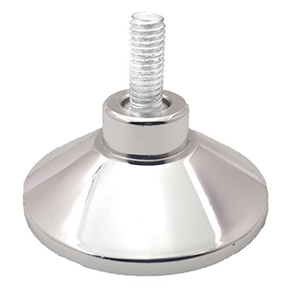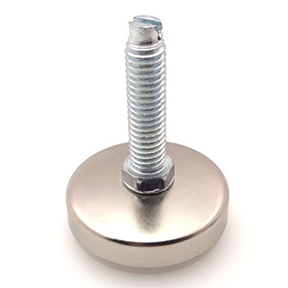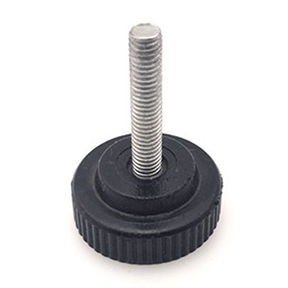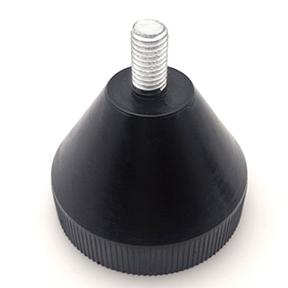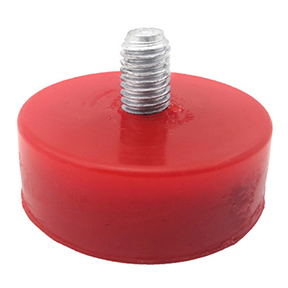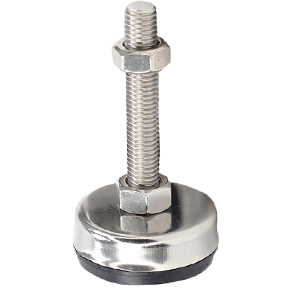Modeling and mechanism of the mechanical properties of high-speed rolling bearing damage analysis
Rolling bearings are widely used in aero-engine rotor speed CNC machine tool spindles, high-speed train wheels for high-speed rotating machinery system, the mechanical properties and the operating state has an important influence on the accuracy of the entire rotor system , reliability and service life . In the high-speed, high acceleration and other unconventional conditions, centrifugal , gyroscopic moments , friction, heat distortion , incentives and other external load factors significantly affect the dynamic behavior of high-speed rolling bearings , bearing form of exercise inside becomes very complex, and rolling the bearing , between the outer ring in addition to the pure rolling contact , accompanied by spinning (spinning) and sliding (skidding) and other sports : contact load bearing contact angle and the distribution has undergone significant changes, so that the mechanism of high-speed rolling bearing fault analysis and fault diagnosis becomes more difficult.
For critical major equipment , meaning a significant early fault diagnosis , but early bearing failure reflects the high speed response signal is not obvious , and susceptible to interference noise transmission path and work and other factors . This is not obvious relationship between intrinsic motivation and the dynamic response of the fault , so fault diagnosis technology based on signal processing and feature extraction encountered new challenges. In the rolling bearing fault diagnosis , domestic and foreign scholars for a long , a lot of research and development of technology -based fault detection and diagnosis of vibration , acoustic emission signals such as India the status of research scholars Patl rolling bearing fault diagnosis were reviewed ls]. Compared fault detection technology, research and failure mechanism of rolling bearing fault modeling theory is particularly inadequate. In recent years, the rolling bearing fault modeling for scholars at home and abroad more and more attention . GM 's U.S. cao spherical roller bearings for the establishment of a complex dynamic model to study the surface damage , preload and radial clearance and other issues.
Nonlinear model and gear bearing model Australian scholar saw al hi to time-varying integration , simulation and damage local spalling failure of the bearing. Professor Chen Guo , Nanjing University of Aeronautics and Astronautics established a rotor with a rolling bearing fault of a rolling bearing casing disaster combined model and studied the rolling bearing outer ring, the inner dynamics modeling method and damage rolling Iranian scholar Rafsanjani establish a rolling bearing non- linear dynamics model , gives inner ring, outer ring and rolling mathematical description of local damage . Indian scholar Patel established a deep groove ball bearing dynamics model to study the vibration response of the bearing inner and outer rings single point and multi-point failure.
Professor Shi Linsuo 31 Second Artillery Engineering College established a mathematical model of random vibration partial failure of rolling bearings , bearing failure during simulated vibration response [l41. After Professor Wang Zhongsheng , Northwestern Polytechnical University, created a 6 -DOF fault bearing dynamics model, which takes into account factors variable stiffness and nonlinear rolling slide caused by the bearing clearance , the resonator and the introduction of unit failure simulation the bearing element has a high-frequency vibration IBI .
For these studies the dynamic rolling bearing fault simulation helps to better understand the mechanism and characteristics of bearing failure , to some extent, provide a theoretical foundation and basis for monitoring and fault diagnosis of rolling bearings. Most of the existing rolling bearing fault model does not consider multiple parameters that affect the speed , operating temperature, external loads, etc. , and therefore the need to improve model accuracy ; majority for the purpose of rolling bearing fault modeling dynamics simulation response after injury , while failure study the mechanism of insufficient bearing rarely explored , especially the initiation and development in the evolution of high-speed rolling bearing damage during operation . This paper considers the rotating inner ring centrifugal expansion and thermal expansion deformation of the rolling bearing model Jon es proposed improvements , the establishment of a high-speed rolling bearing mechanical model and experimental verification . Rolling studied internal static load conditions and dynamic loads and high speeds , such as contact load , contact position variation , and damage mechanisms and early bearing injury site were analyzed to provide a theoretical speed for the identification and fault diagnosis of rolling bearing damage basis.
2 high-speed rolling bearings theoretical modeling and model validation
2.1 Improved model Jo nes Jon es Rolling Rolling model is more complete bearing mechanical model , but it does not consider the work of the temperature rise due to the expansion and deformation caused by centrifugal force . In this paper, considering the effect of centrifugal force and a gyroscopic moment basis , taking into account the effect of radial thermal expansion of the bearing and the inner ring of the bearing inner child centrifugal any expansion displacement of the rolling bearing to improve the model Jon es , it is more practical .
l) any relationship analysis of seven typical rolling bearing children what the structure shown in Figure 1 , with the idea of the finite element will be seen as a rolling bearing inner ring and an outer ring nodes node cells , each node contains motion 5 degrees of freedom for two rotational degrees of freedom for analysis , as a stationary outer ring . Rolling rotating at high speed and under load , the inner ring , outer ring of the ball , and the relative position of the geometry changes . When the bearings are subjected to load balance and the bearing inner ring and the rolling elements are moved to a new location.
2 ) Analysis of the force balance state high-speed rotation angle contact ball bearings , because the presence of the contact angle , ball bearing inner and outer rings of the question is not pure rolling contact exposure , accompanied by spinning and sliding and other sports. To simplify the problem in practice , assuming that the balls one of the inner or outer ring raceway as the only pure rolling , and in the other raceway and spinning motion exist. Consider rolling suffered centrifugal force and gyroscopic moment , a ball in the flat and ball bearing center axis composed of stress analysis .
2.2 Model Validation
1 ) Rolling inside the Rolling Hills stiffness verify the contact angle , the contact load can not be measured , can not be directly verified. Bearing stiffness is a function of load and deformation of the contact , if calculated correctly , you can think the whole model is correct , so choose a standard bearing stiffness as a validation of the model. Selection of a high-speed spindle system inside the Rolling validate the theoretical model , within the system of the spindle bearings are manufactured in Germany G MN angular contact ball bearings , the front two bearing type on the 1st of HYKH61914, backend three bearings HYKH61911, back to back configurations . The bearing stiffness of the paper with a standard model calculated rigidity G MN Company l20] provided contrast , as shown in Table 2 . In light preload , the preload and heavy preload all three cases, the results are well matched with the standard value , the maximum error of 1.1% , to verify the accuracy of the theoretical model .
2 ) the dynamic characteristics of the high-speed rolling bearings operating status verification Rolling In order to study the state of the high-speed running state changes , the high-speed spindle mounted on a CNC milling machine , observe the dynamic characteristics of the system with the variation of speed . The experiment shown in Figure 4 . In the machine coordinate system , Z axis as the main axis , X and Y -axis table feed direction , respectively . There simulation tool cutting teeth ; bearing preload hydraulic pump hydraulic output is set 1O0Ps i ( equivalent to approximately bearing preload 17 2 8N).
Use hammer K ist le r 9 7 2 2 ( sensitivity :. 2 13 mv plus ) stimulated N) J, and a laser vibrometer po lyt eeho FV-5 3 4 measuring the dynamic response of the tool tip , and finally the force signal and modal vibration response signal input test software to get the experimental frequency response functions . When the spindle speed is 12 0 0 0: / m in, the tip of the spindle system simulation and experimental comparison of the frequency response function is shown in Figure 5 (a) and (b) below.
Overall, although the experimental frequency response functions interspersed with plenty of spindle speed multiplier interference, simulation and experimental frequency response functions can still be a good match . The simulation tool cutting teeth ; bearing preload hydraulic pump hydraulic output is set 1O0Ps i ( equivalent to approximately bearing preload 17 2 8N). Use hammer K ist le r 9 7 2 2 ( sensitivity :. 2 13 mv plus ) stimulated N) J, and a laser vibrometer po lyt eeho FV-5 3 4 measuring the dynamic response of the tool tip , and finally the force signal and modal vibration response signal input test software to get the experimental frequency response functions . When the spindle speed is 12 0 0 0: / m in, the tip of the spindle system simulation and experimental frequency response functions shown in contrast. Overall, although the experimental frequency response functions interspersed with plenty of spindle speed multiplier interference, simulation and experimental frequency response functions can still be a good match .
4 -speed rolling bearing damage mechanism analysis
Rolling failure occur during their operation characteristics of the vibration signal can be divided into different classes of wear and surface damage fault fault . Generally , bearing surface wear failure experience working longer belongs gradual failure, its low degree of harm . Tables include fatigue damage fault pitting, spalling , cracks , etc., when the damage other components in contact with the bearing points , will produce mutations impulse force , causing the system resonance , resulting in vibration and noise increases. In normal operating conditions it, failure is most likely to occur in the form of rolling elements or inner and outer raceway contact stress points to withstand cyclic changes due to the emergence of fatigue pitting , so that the rolling bearing failure.
5 Conclusions
(l) the establishment of a high-speed rolling bearing mechanical model and experimentally verified. The model takes into account the rotation of the inner ring rolling bearing centrifugal expansion deformation and thermal deformation , can accurately predict the bearing contact angle, the contact load and stiffness parameters.
( 2 ) bearing inner radial centrifugal force caused by the expansion will change the dynamic properties of the bearing. The bearing outer ring to increase the contact angle with the inner race of the centrifugal expansion amount decreases with the increase of the contact load and the amount of the centrifugal expansion of the inner ring increases.
( 3 ) for high-speed rolling bearings, the rolling element and the maximum contact stress and maximum shear stress in the outer ring are orthogonal with increasing velocity is increased , the contact fatigue loads more damaging the outer ring ; while , when maximum orthogonal the depth of shear stress is increased, the occurrence of fatigue cracks becomes deep portion . Change of state of contact between the rolling elements with the outer and inner opposite .
Previous:Principles and methods of handwheel operated regulating valve Next:Principles and methods of handwheel operated regulating valve
- Fracture repair knowledge ruled handwheel handle
- Troubleshooting ruled bakelite hand wheel and troubleshooting
- Ruled handwheel is a natural bakelite handwheel
- Bakelite valve installation, operation and maintenance
- New pressure-filled rubber mold bakelite handle
- Large hydro elastic metal plastic Thrust Bearing Technology
- Our robot industry development trends
- CNC machine tools towline Forecast
- Rotating the handle needle valve
- Rotation of the handle shut-off valve


